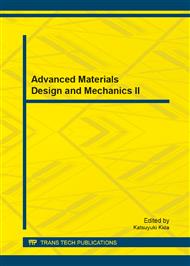p.80
p.84
p.88
p.97
p.101
p.104
p.111
p.115
p.119
Mechanical Properties of Particleboard from Oil Palm Trunk (Elaeis Guineensis Jacq) Using Phenol Formaldehyde Adhesive in Relation to Particle Sizes and Board Thickness
Abstract:
High demand for wooden materials and rises in agricultural areas and forest fires increased the importance of composite particleboard instead of using solid woods. Particleboards are among the most popular materials used in interior and exterior applications. The objective of this study was to examine the physical and mechanical properties of phenol formaldehyde particleboard made from oil palm trunk (OPT) with 11% resin content. Two different board thicknesses were use; 12mm and 16mm. The particle size use in this study was 2mm and 1mm. Phenol formaldehyde (PF) was used as the binder. The result showed that modulus of rupture and modulus of elasticity were perform better at 16mm board thickness with 1.0mm particle size and meet the standard. The internal bonding strength was parallel with bending strength.
Info:
Periodical:
Pages:
101-103
Citation:
Online since:
August 2013
Keywords:
Price:
Сopyright:
© 2013 Trans Tech Publications Ltd. All Rights Reserved
Share:
Citation:


